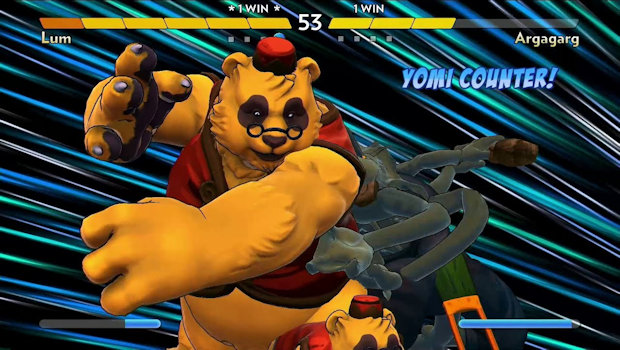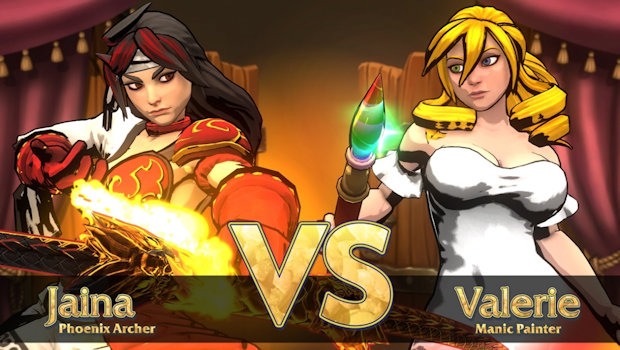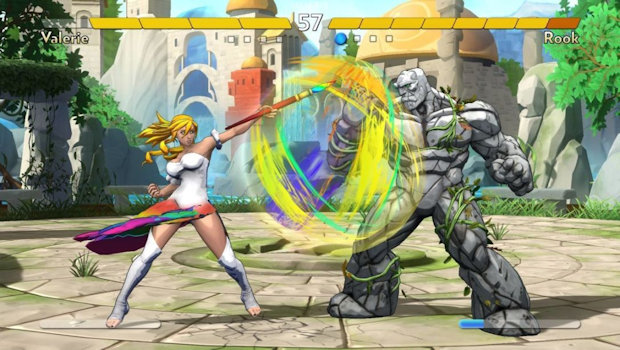I’m not what you’d call a typical Fighting game fan. For one, I’m absolutely terrible at them. I can generally grasp the basics of a fighting game and then I learn approximately one move and spam that over and over with standard moves peppered in and hope I win. If I’m playing anyone other than my wife or local friends, the likelihood is that don’t win.
Conceptually, fighting games are pretty simple. Punch or kick your opponent until they have no more health. Functionally, even without special fireball magic moves, fighting is a strategic battle of offense and defense. If you can’t think about both at the same time and always one step ahead of where you already are, then you’ll most likely lose. I never think defense and just attack, attack, attack. This works on novices, because they too are only thinking about one aspect of the fight, or it works for a round against an experienced fighter while they try to gauge what they are dealing with.
The new Switch fighting game Fantasy Strike attempts to simplify everything in a fighting game and allow you to focus on learning how to blend offense and defense. It succeeds to a point.
Fantasy Strike has a light attack, heavy attack, throw, special, and super. The tutorial threw me off a bit because the attacks are labeled different from the Switch controller. I’m not sure if this was a design choice or an accidental hold over from its prior iterations in early access on Steam. Either way it was confusing. However, once you work through that tie up and associate the attacks with the corresponding Switch button, the game begins to make more sense and play easier.
And it plays pretty damn easily. Animations are smooth and button presses don’t feel delayed.
Weirdly, and maybe this is just my lack of deeper knowledge of fighting games outside of the big ones like Street Fighter, Mortal Kombat, and Soul Calibur but, Fantasy Strike’s characters have different health bars. Faster characters like the little ninja or the manic painter have the least health, whereas big grappling characters have a much larger bar. The trade-off of course is that the small fast characters are more quick and agile while the grapplers are slower, albeit more powerful.
As my playstyle is attack, attack, attack for fighting games the manic painter worked out best for me. She’s fast and agile and I was able to dart around the fight zone with ease. And because there are a handful of different playing characters, most players should be able to find one that works for them.
One thing that didn’t work for me was the hands off counter system, the Yomi-Counter. A character can initiate a Yomi-Counter when an attacker is attempting to throw them by not touching the controller. At all. It fundamentally goes against everything I know about fighting games. Who just doesn’t do anything when getting attacked. It makes no sense and when I tried it, I almost always flubbed it or got punched instead, meanwhile the AI would consistently land it on me to the point, I stopped trying to do throws on them.
Fantasy Strike has the standard list of game modes for a fighter, including an arcade mode with opening and closing cutscenes for each character. The world Fantasy Strike takes place in seems awesome but the short snipits you get in arcade mode just leave you wanting more. I know it’s a traditional fighting approach to its narrative but Injustice and modern Mortal Kombat do such a great job, it is hard to go back to something that is so rudimentary, although I understand why it is this way.
Online seems stable but it is not my scene so, most of my time was spent in one on one versus with a couch player. And in that fashion, it works great. It’s not Street Fighter or Mortal Kombat but it looks good and the characters are fun enough (there is a gambling panda) that as a budget fill-in over those big names, it works.
This article was written with material provided from the developer for the Nintendo Switch. For more on our review process, please read here.


